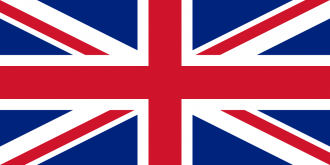Nowadays, the United Kingdom is a leading trading power and financial centre, comprising the third largest economy in Europe, after Germany and France. Agriculture is intensive and highly mechanized, covering about 70% of the British food needs. Large coal, natural gas, and oil resources are available –though natural gas and oil reserves are declining, obliging the UK to be a net importer of energy since 2005. Banking, insurance and business services are key drivers of British GDP growth. Finally, manufacturing, even though has shrank compared to the past, still accounts for about 10% of the nation’s economic output.
In 2008, the global financial crisis hit the British economy. This was reflected in the sharp dip of the GDP, for the first time in recent years, by 2.3%, in the last semester of 2008 (See Chart 1). Falling home prices, high consumer debt and global economic recession, compounded Britain's economy, prompting the government at the time, to implement a number of measures to stimulate the economy and stabilize the financial markets.
To face the high public deficits and debt levels, in 2010 the coalition government initiated an austerity programme that has been continued till today, under the subsequent majority government. In 2013, the economy was still flat-lined and the unemployment rate was stuck with small alternations at 8%. Since then though, the British economy has achieved a positive growth rate with small fluctuations, as illustrated in Chart 1.
According to the Organisation for Economic Co-operation and Development (OECD), the United Kingdom reached a 2.6% growth in 2014 – way ahead of the average growth of the rest of OECD members - due to greater consumer spending and the recovery of the housing market. Despite the tremendous progress in ‘recuperating’ from the largest economic crisis of the last 80 years, the nation’s deficit still remains one of the highest of the G7 –regardless that the UK is one of the fastest growing economies, standing at 5.1% of the GDP, as of mid-2015. Towards the continuity of this progress, further elimination of the deficit through additional cuts to public spending and welfare benefits, has been planned. According to the HM Treasury Budget 2015 report, the Government spending for 2015-16 is expected to be £745 billion; 6% will be allocated to Defence, 23% to Health and Personal Social Services, 13% to Education and 31% to Social Protection.
Yet, labour productivity, as well as private investment and further finance of businesses, are considered crucial for the United Kingdom’s economy. Thinking of broadening further the tax base-taxing to the self-employed, a decrease of corporation tax from 20% to 18%, as well as a raise for infrastructure investment by 25%, have been pledged by the government.
Since 2010, the private employment sector has increased by almost 3 million, dropping the unemployment level to 5.1%, in the last quarter of 2015. The uninterrupted decrease of the unemployment rate will continue during 2016, when it is expected to reach the 4.5% figure.
In relation to UK trade activity (2000-2014) the average export growth to China has been considerably higher than the total export growth; however, UK exports to China have been typically volatile, therefore this growth has slowed down, since 2011. In 2014, Germany contributed positively at +0.3%, comparing to the other countries that had largely a negative contribution -US and France -1.6% and -0.3% respectively, followed by the rest of the country’s top exports destinations.
In 2014, the percentage of businesses exporting, experienced a sizable decrease, falling by 0.8% to 10.8%, while the percentage of businesses importing also fell by 0.2% to 10.7%, despite the increase of the number of active businesses in Great Britain. According to the UK’s Office for National Statistics, the “Professional, Scientific and Technical Activities” sector was the largest exporter in 2014, while the sector with the largest number of imports was “Wholesale and Retail Trade; Repair of Motor Vehicles and Motorcycles”.
In 2015, the largest UK partner countries were Germany, China, the Netherlands, Belgium & Luxemburg and France. In the same year, the UK’s annual trade (goods and services) deficit reached £34.7 billion, £0.3 billion higher than in 2014. Particularly, the goods deficit widened by £1.9 billion, to £125 billion.
Overall, total trade exports decreased by £1.0 billion to £512.4 billion, while total imports decreased by £0.7 billion to £547.2 billion, over the same period.
Finally, it should be stressed that the United Kingdom, as a mature economy is the recipient of an important amount of global Foreign Direct Investment (FDI). It is indicative that in 2014, FDI intended to the UK, increased by 10 billion to $45,456,617,379 (current US dollars).

